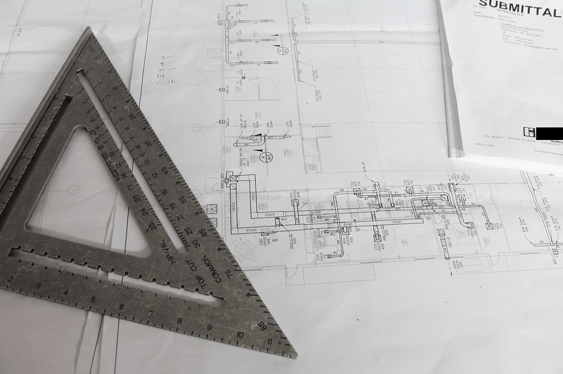Sometimes certain parts of the commissioning and retrocommissioning process can seem trivial to both the contractor and the commissioning agent. Of course, the process involves some important and significant checks, such as ensuring the piping design detail matches the as-built piping, and that the specified ductwork sizes match the as-built ductwork size. But the commissioning process also deals with some of the finer details that may not seem as consequential or that have already been checked by multiple parties. So, why would the commissioning agent also need to check it again? In this post I am providing a couple examples of real-world commissioning issues that we’ve found. Each is an excellent reminder of why the seemingly minor commissioning verification steps are still required and important, even though they may seem inconsequential.

Equipment Coordination
One step in the commissioning process that can sometimes seem insignificant is verifying the coordination of equipment that is intended to operate together, to ensure that these various pieces of equipment can operate properly together as one system. On a recent project, during the commissioning process, it was found that the variable frequency drive (VFD) size did not match the motor it was installed to control. The issue was discovered during the submittal review process. If the drive was not sized to match the horsepower of the motor it controls, it could result in operational issues along with the potential for wiring size changes for power wiring serving the VFD. Discovering this issue early on, during submittal review, was the best-case scenario for the project since the equipment hadn’t yet been installed and the drive could be changed out without any rework to an installed piece of equipment. Catching this issue early on saved time and money for the project.

What’s the Big Deal About a Leaky Valve?
On another recent project, the retrocommissioning process uncovered an issue where a steam valve was leaking on an air handling unit (AHU) steam heating coil. In this case, the valve command from the building automation system (BAS) commanded to 0% open and the valve actuator was found to be 0% open, but heat was still being generated by the heating coil. This resulted in simultaneous heating and cooling at the AHU. This is like starting a fire in the fireplace and then putting the air conditioning on in your house - not very efficient. Although something like a leaky valve may not seem like a major issue, in this case it was causing thousands of dollars in additional energy costs per year.

These are just two examples of small details uncovered by the commissioning and retrocommissioning process that can have a large impact on energy and/or project costs. Please contact us to find out how Cx Associates can help you save money and time on your commissioning and retrocommissioning projects.


